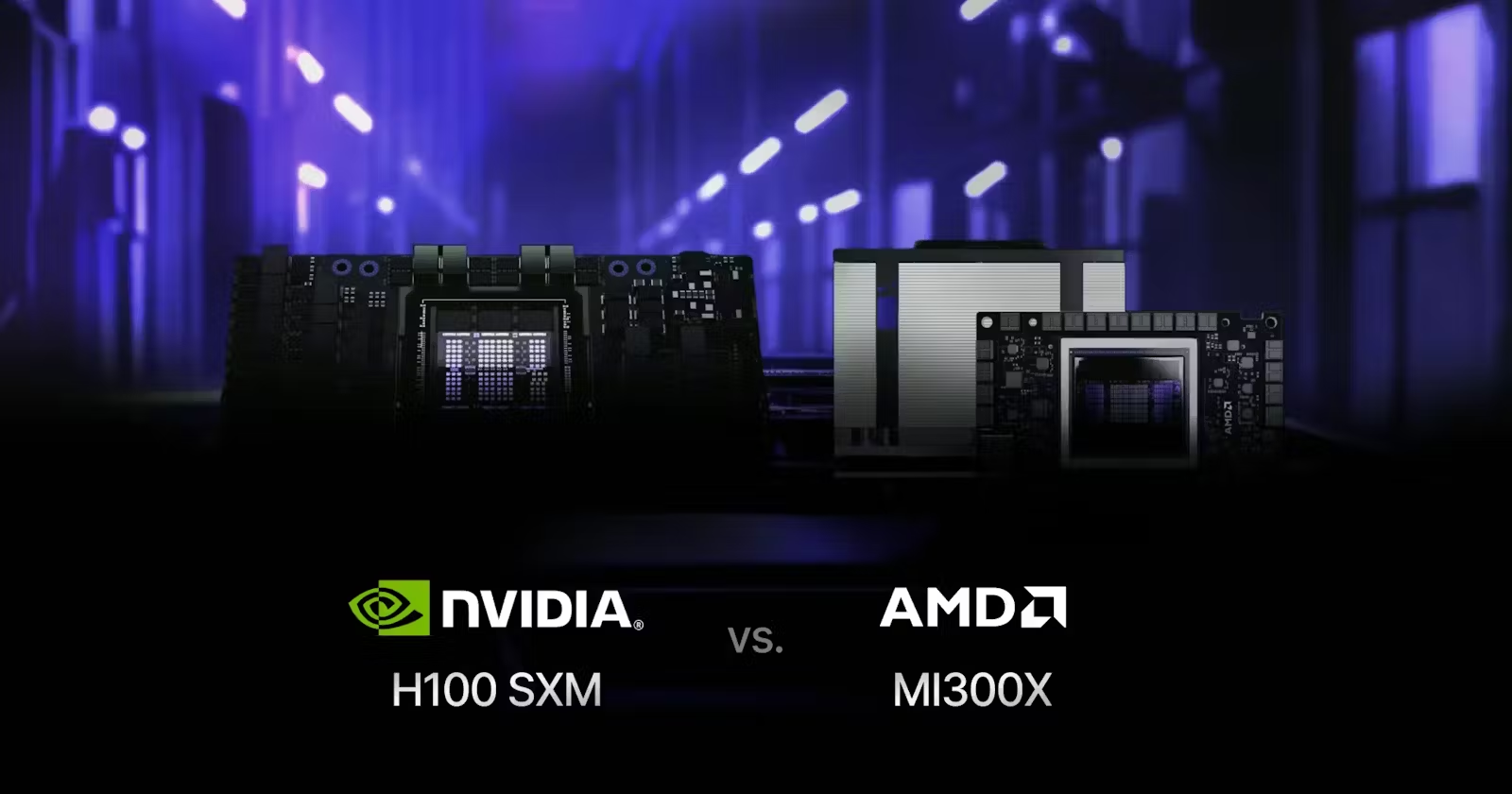In the ever-evolving landscape of high-performance computing and artificial intelligence, choosing the right GPU can make a significant difference in your project’s success. Today, we’re diving deep into a comparison of three powerhouse GPUs: NVIDIA’s H100 and H200, and AMD’s MI300X. We’ll explore their specifications, performance metrics, pros and cons, and ideal use cases to help you make an informed decision.
NVIDIA H100
Specifications:
• Architecture: Hopper
• Memory: 80GB HBM3
• FP64 performance: 30 TFLOPS
• FP16/BF16 performance: 1,979 TFLOPS
• INT8 performance: 3,958 TOPS
Pros:
• Excellent performance for AI and ML workloads
• Mature ecosystem with CUDA, cuDNN, and TensorRT
• Good balance of memory and performance for most tasks
Cons:
• Lower memory capacity compared to H200 and MI300X
• Higher power consumption
• Premium pricing
Use Cases:
• General-purpose AI/ML training and inference
• High-performance computing
• Data analytics and visualization

NVIDIA H200
Specifications:
• Architecture: Hopper (enhanced)
• Memory: 141GB HBM3e
• FP64 performance: 34 TFLOPS
• FP16/BF16 performance: 2,166 TFLOPS
• INT8 performance: 4,331 TOPS
Pros:
• Significantly increased memory capacity over H100
• Improved performance across all precision levels
• Ideal for memory-intensive workloads
Cons:
• Likely to be more expensive than H100
• May require system upgrades to fully utilize capabilities
• Potential overkill for smaller projects
Use Cases:
• Large language models and complex AI training
• Memory-intensive simulations and data processing
• Advanced scientific computing
AMD MI300X
Specifications:
• Architecture: CDNA 3
• Memory: 192GB HBM3
• FP64 performance: 46 TFLOPS
• FP16/BF16 performance: 383 TFLOPS
• INT8 performance: 766 TOPS
Pros:
• Highest memory capacity among the three
• Superior FP64 performance
• Competitive pricing
Cons:
• Lower performance in FP16/BF16 and INT8 compared to NVIDIA’s H100 and H200
• Ecosystem and software support not as mature as NVIDIA
Use Cases:
• High-performance computing (HPC) applications
• Scientific simulations
• Large-scale data processing
Comparative Analysis
1. Memory Capacity:
• The MI300X leads with 192GB of HBM3, ideal for the most memory-intensive applications.
• The H200 follows with 141GB HBM3e, providing substantial memory for demanding tasks.
• The H100, with 80GB HBM3, is suitable for general-purpose tasks requiring substantial memory.
2. Performance:
• In FP64 operations, crucial for scientific computing, the MI300X outperforms both NVIDIA options.
• For AI and ML workloads that often use lower precision (FP16/BF16 and INT8), both NVIDIA GPUs significantly outperform the MI300X.
• The H200 offers a slight performance boost over the H100 across all precision levels.
3. Architecture and Ecosystem:
NVIDIA’s Hopper architecture, used in both the H100 and H200, is well-established and supported by a mature ecosystem of tools and libraries. AMD’s CDNA 3 architecture in the MI300X is newer and, while promising, doesn’t yet have the same level of ecosystem support.
4. Use Case Considerations:
• For general AI/ML workloads, the NVIDIA options are typically more suitable due to their superior performance in lower precision operations and better software support.
• For scientific computing and simulations that require high FP64 performance, the MI300X could be the better choice.
• For projects requiring massive memory capacity, both the H200 and MI300X are strong contenders, with the choice depending on the specific workload requirements.
Conclusion
Choosing between these GPUs ultimately depends on your specific needs:
• If you’re focusing on AI and ML workloads and want a balance of performance and memory, the H100 is a solid choice.
• For pushing the boundaries of large language models or working with extremely memory-intensive tasks, the H200 offers a significant upgrade.
• If your work revolves around scientific simulations or HPC applications that benefit from high FP64 performance and massive memory, the MI300X could be the ideal option.
Remember to consider not just the hardware specs, but also your existing infrastructure, software compatibility, and budget constraints when making your decision. Each of these GPUs represents the cutting edge of accelerated computing, and choosing the right one can significantly impact the efficiency and capabilities of your projects.
Leave a Reply
You must be logged in to post a comment.